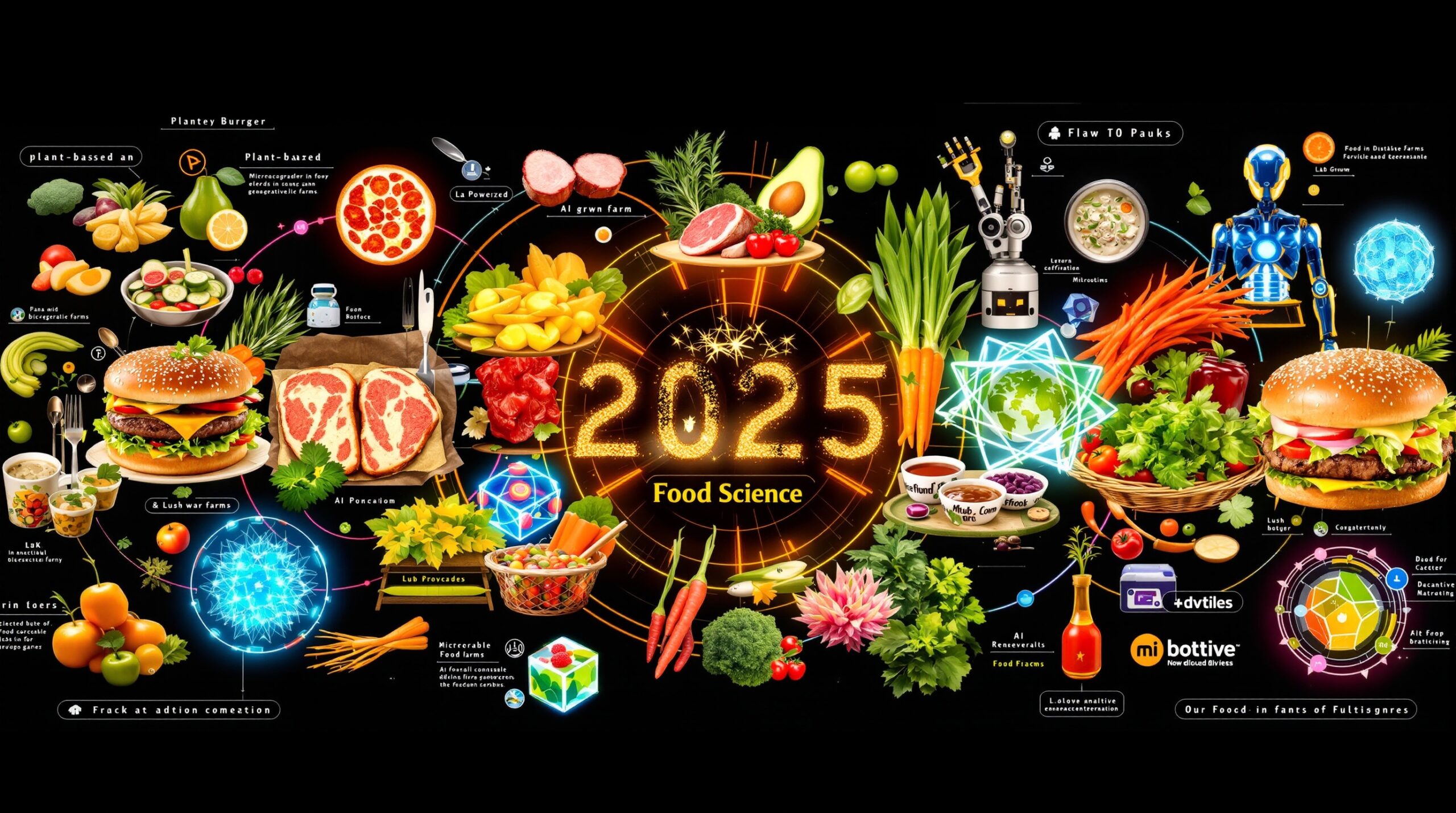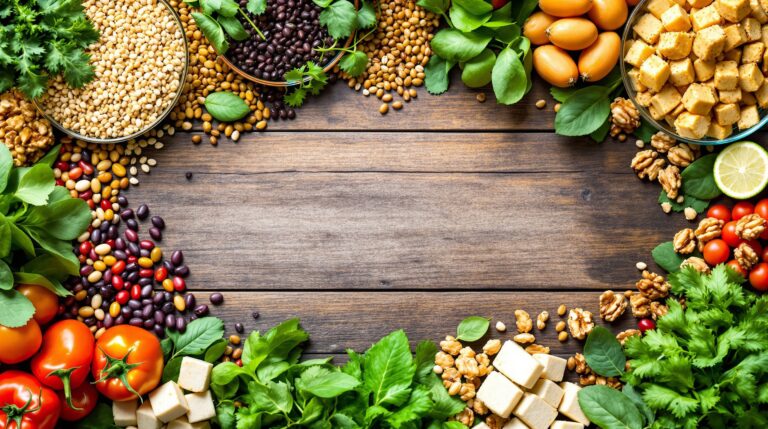10 Cutting-Edge Food Science Innovations Shaping Our Diets in 2025
Cutting Edge Food Science Innovations
Introduction
Food science stands at the forefront of addressing global challenges like climate change, population growth, and health crises.
In 2025, researchers and companies actively push boundaries with technologies that enhance nutrition, reduce waste, and ensure food security.
This listicle explores the top 10 innovations transforming how we produce, consume, and think about food. Drawing from recent advancements, these developments not only boost efficiency but also align with sustainable practices.
Whether you’re a food enthusiast, industry professional, or curious consumer, these insights reveal the exciting future of our plates.

1. Alternative Proteins: Redefining Meat and Dairy
Scientists actively develop alternative proteins to combat the environmental impact of traditional animal farming.
Plant-based options like pea and soy proteins mimic meat’s texture and flavor through advanced extrusion techniques.
Meanwhile, precision fermentation produces dairy-like proteins using microbes, slashing greenhouse gas emissions by up to 90%. Companies lead this charge by creating burgers that bleed and cheeses that melt identically to their animal counterparts.
This innovation addresses protein demands for a growing global population while promoting ethical sourcing. For instance, it reduces land use and water consumption significantly.
Consumers benefit from healthier options free from antibiotics and hormones. Explore more on alternative proteins at the USDA’s resource page: USDA Alternative Proteins Guide.
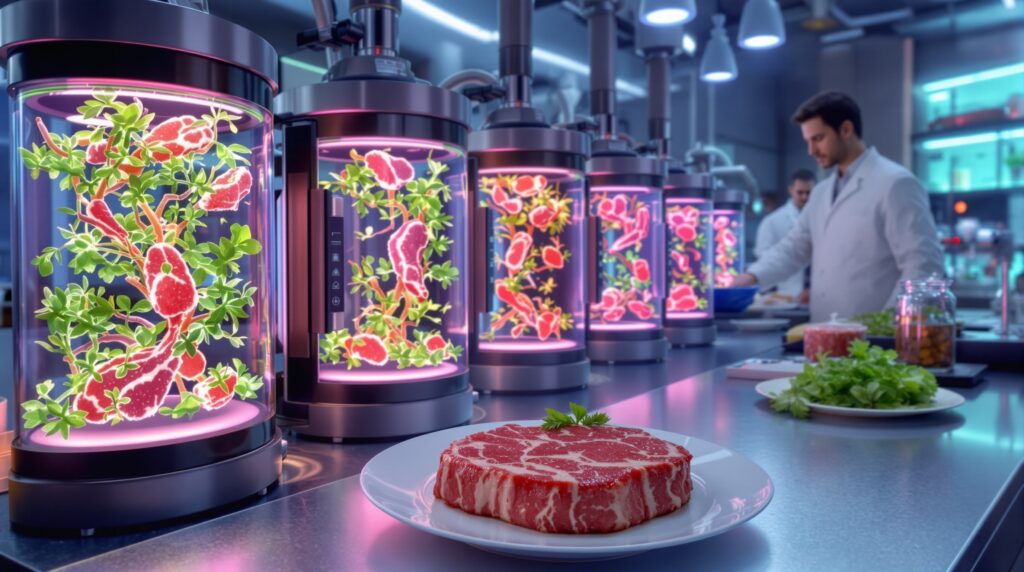
2. Lab-Grown Meat: Cultivating Cells for Sustainable Protein
Food scientists cultivate lab-grown meat by growing animal cells in bioreactors, eliminating the need for livestock farming.
This process, also known as cellular agriculture, produces real meat without slaughter, cutting methane emissions and animal welfare concerns. In 2025, startups scale production, making cultured beef, chicken, and seafood affordable and accessible.
The technology ensures consistent quality and customizes nutritional profiles, such as adding omega-3s for heart health. Regulatory bodies like the FDA approve these products, confirming their safety.
This innovation revolutionizes global food supply chains by reducing dependency on arable land. Dive deeper into lab-grown meat via the FDA’s overview: FDA on Cultured Meat.
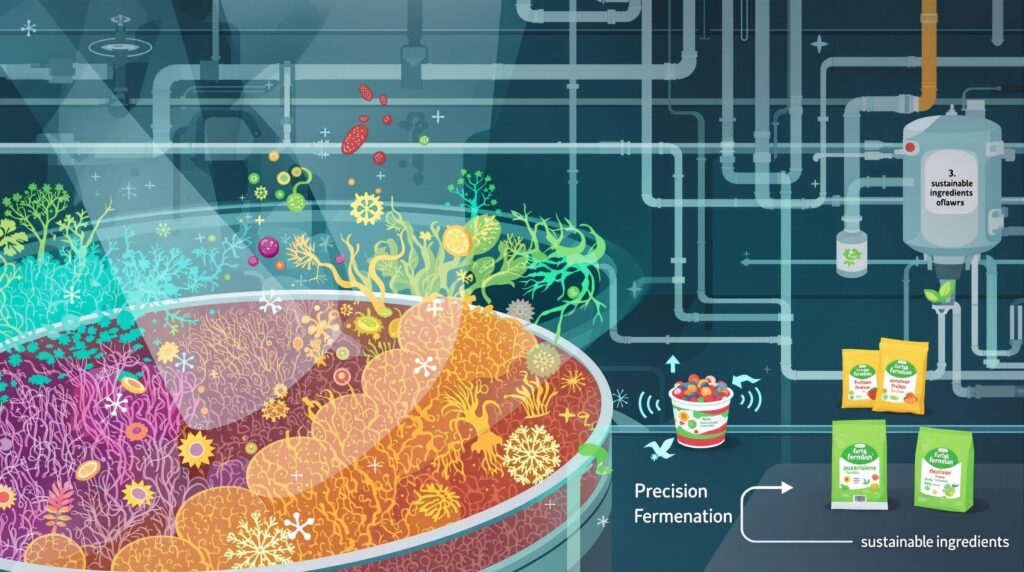
3. Precision Fermentation: Engineering Microbes for Better Foods
Experts harness precision fermentation to engineer yeast and bacteria, producing ingredients like proteins, fats, and flavors sustainably. This method creates everything from egg whites to vanilla extract without traditional farming.
It minimizes resource use, as microbes grow in controlled vats using minimal water and energy.
In 2025, this tech expands to functional foods that boost immunity or gut health. Brands incorporate these into everyday products, enhancing taste and nutrition while lowering costs.
The process also enables rapid innovation, responding to consumer trends like low-sugar alternatives.
Precision fermentation supports a circular economy by upcycling waste into valuable compounds. Learn about its applications from the World Economic Forum: WEF Precision Fermentation.
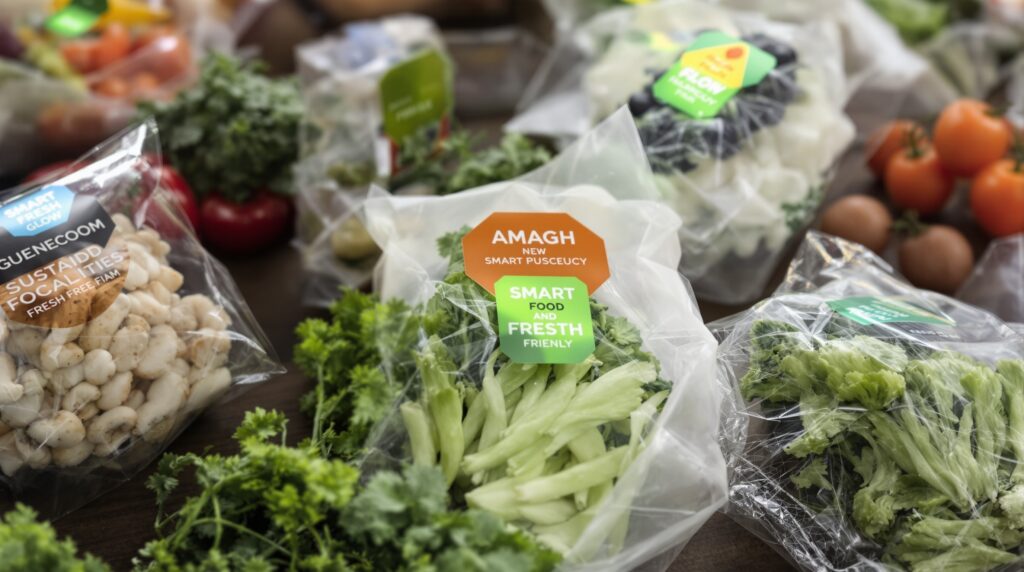
4. Sustainable Food Packaging: Fighting Waste with Smart Materials
Innovators design sustainable packaging using biodegradable materials like mushroom mycelium and algae-based films. These alternatives replace plastic, decomposing naturally without harming the environment.
Nanotechnology embeds sensors that detect spoilage, extending shelf life and reducing food waste by 30%. Active packaging releases antimicrobials to keep produce fresh longer.
In 2025, regulations push companies toward eco-friendly options, aligning with global zero-waste goals. This shift not only preserves resources but also appeals to eco-conscious consumers.
Brands adopt these to enhance brand loyalty and comply with laws. Check out innovations in packaging at the Ellen MacArthur Foundation: Ellen MacArthur Foundation Circular Packaging.
5. Personalized Nutrition: Tailoring Diets with AI and Genomics
Food scientists integrate AI and genetic testing to create personalized nutrition plans. Apps analyze DNA, lifestyle, and preferences to recommend customized meals that optimize health outcomes. This approach tackles issues like obesity and nutrient deficiencies by suggesting fortified foods or supplements.
In 2025, wearable devices track real-time data, adjusting diets dynamically. Companies offer 3D-printed meals with precise nutrient ratios, making healthy eating effortless.
This innovation empowers individuals to prevent diseases through proactive choices. It fosters inclusivity for diverse global audiences with varying needs. Explore personalized nutrition resources from Harvard Health: Harvard Personalized Nutrition.
6. Regenerative Agriculture: Healing Soil for Healthier Foods
Farmers adopt regenerative agriculture to restore soil health through practices like cover cropping and no-till farming.
This method sequesters carbon, enhances biodiversity, and produces nutrient-dense crops. Food science backs it with data showing higher antioxidant levels in regeneratively grown produce.
In 2025, tech like drones and soil sensors optimize these techniques, boosting yields sustainably. This innovation combats climate change while improving food quality and resilience.
Global supply chains integrate it to meet sustainability demands. Read more on regenerative practices at the Rodale Institute: Rodale Institute Regenerative Agriculture.
7. AI in Food Processing: Enhancing Efficiency and Safety
Engineers deploy AI to streamline food processing, predicting maintenance needs and optimizing recipes.
Machine learning algorithms detect contaminants in real-time, ensuring safety standards. In 2025, AI-driven robots handle tasks like sorting and packaging, reducing labor costs and errors.
This tech analyzes consumer data to innovate flavors and textures quickly. It minimizes waste by forecasting demand accurately.
AI transforms the industry into a smarter, more responsive ecosystem. Discover AI applications in food from the Institute of Food Technologists: IFT AI in Food.
8. Functional Foods for Gut Health: Boosting Wellness Naturally
Researchers fortify foods with probiotics, prebiotics, and bioactive compounds to support gut microbiomes.
These functional foods, like fermented yogurts and fiber-rich snacks, improve digestion and immunity. In 2025, advances in encapsulation protect these ingredients during processing, maximizing benefits. Consumers seek them for mental health links, as gut health influences mood.
This innovation bridges nutrition and medicine, preventing chronic diseases. Brands market them globally, catering to diverse diets. Learn about gut health from the Mayo Clinic: Mayo Clinic Gut Health.
9. Nanotechnology in Food: Tiny Tools for Big Impacts
Scientists apply nanotechnology to enhance food safety and nutrition. Nanoparticles deliver vitamins precisely, improving absorption rates. In packaging, they create barriers against oxygen and bacteria, prolonging freshness.
In 2025, this tech enables smart labels that change color when food spoils. It addresses global hunger by fortifying staples affordably. Regulations ensure safe use, building consumer trust. Nanotechnology drives efficiency in resource-scarce regions. Explore its potential at the National Nanotechnology Initiative: NNI Food Applications.
10. Circular Food Economy: Turning Waste into Resources
Innovators promote a circular food economy by upcycling byproducts into new products. For example, fruit peels become natural dyes or biofuels. This closed-loop system reduces landfill waste and creates value from scraps.
In 2025, blockchain tracks supply chains for transparency, encouraging sustainable practices. Companies collaborate to minimize losses, supporting global food security. This model fosters innovation and economic growth. Find out more from the FAO: FAO Circular Economy in Food.
Conclusion
These 10 innovations in food science actively shape a more sustainable, healthy, and efficient future.
By embracing them, we tackle pressing issues like environmental degradation and malnutrition.
Stay informed as these technologies evolve, and consider how they impact your daily choices. For ongoing updates, follow reputable sources in food science.

